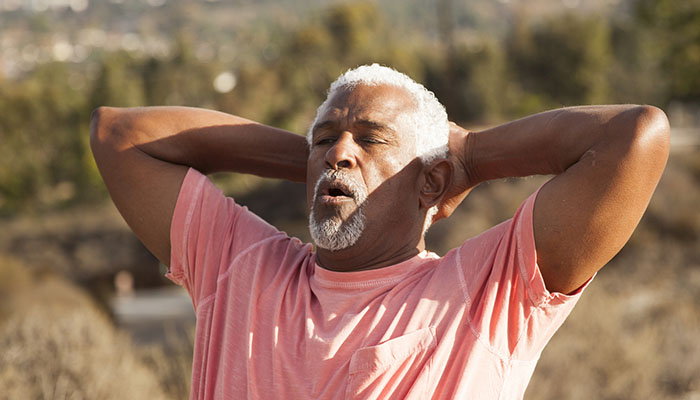
Deep breathing is focused, slow breathing. This is also called diaphragmatic breathing, abdominal breathing, belly breathing, and paced respiration. Diaphragmatic breathing has been scientifically shown to help manage symptoms of health conditions like irritable bowel syndrome, depression, anxiety, and insomnia. Breathing exercises have also been included in physical therapy to strengthen respiratory muscles.
Dr. Elisabeth Westerdahl concluded that the patients who performed deep breathing exercises after their Coronary Artery Bypass surgery had better pulmonary function and smaller areas of atelectasis. A research article by Maria Cebria showed that yoga respiratory training appeared effective and a well-tolerated exercise regimen in frail institutionalized older adults, which can be a useful alternative in improving respiratory muscle function in older populations. Deep breathing has been scientifically proven to also affect the brain, heart, digestion, and immune system, which can make an impact on one’s physiology and health.
Below are additional benefits of deep breathing exercises and different techniques that utilize deep breathing.
Other benefits of Deep Breathing Exercises
- Lowers and stabilize blood pressure
- Helps support correct posture
- Increased levels of endorphins and energy
Techniques for relaxation response with breath focus
There are also other breathing techniques and exercises to explore like:
Breathing Techniques
- Pursed Lip breathing – Slows down the pace of breathing while pursing the lips on exhales to make the breaths more intentional and effective.
- Breath focus technique – Sit or lie down comfortably to focus on the controlled breathing while closing one’s eyes to use imagery, words, and phrases.
- Lion’s Breath – A yoga breathing practice to relieve tension in the chest and face.
- Alternate nostril breathing – Gently placing the thumb over a nostril to inhale and exhale through the open nostril and alternating.
- Equal breathing – Inhaling and exhaling for the same duration of time.
- Resonant or coherent breathing – Inhaling and exhaling for a count of 5.
- Sitlai breath – Helps to lower body temperature and relax by extending breaths in length.
- Humming bee breath – If one exhales while closing the mouth to make a humming sound, then one will experience a relief of anxiety.
Breathing Exercises
- Stimulation Breath – Inhale and exhale rapidly, holding the same duration for both, through the nose with the mouth closed.
- The 4-7-8 Exercise – Inhale through the nose for a count of 4, hold the breath for a count of 7, and exhale for a count of 8.
- Breathing Counting – Count the exhales. This is used in meditation to let the body naturally do the breathing.
Remember that posture and being in a comfortable position is important before starting any breathing technique and/or exercise.
WellPath Partners is your senior resource referral guide. Follow us on ALL social media platforms and join us weekly for more content and public health discussions.
By: Hilda Huambachano
Placement Coordinator at WellPath Partners
B.S. in Health Science & Biology at San Diego State University
MPH Candidate at California State University, Long Beach
